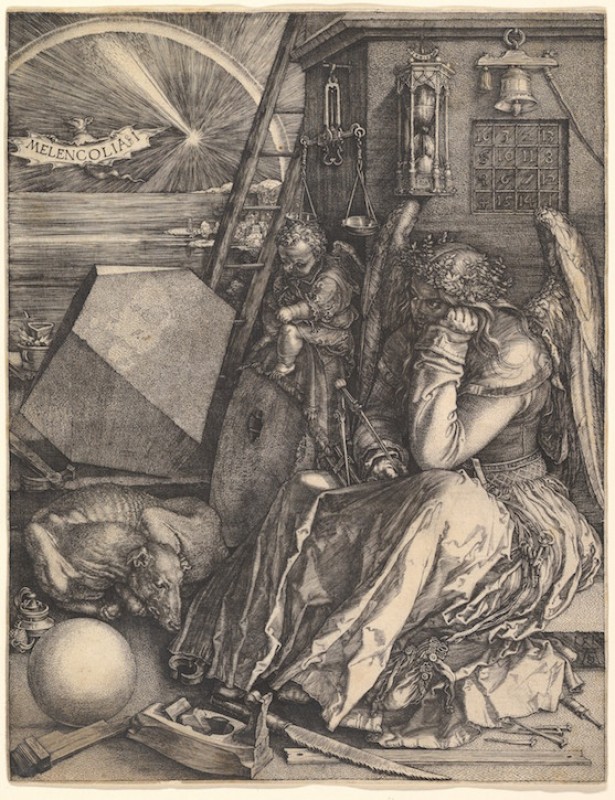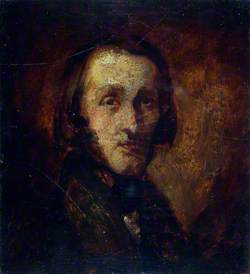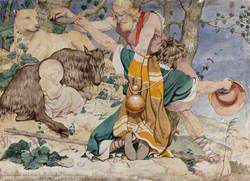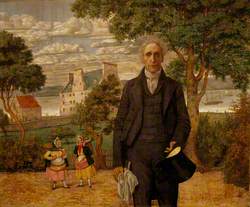How you can use this image
This image is available to be shared and re-used under the terms of the Creative Commons Attribution-NonCommercial-NoDerivatives licence (CC BY-NC-ND).
You can reproduce this image for non-commercial purposes and you are not able to change or modify it in any way.
Wherever you reproduce the image you must attribute the original creators (acknowledge the original artist(s) and the person/organisation that took the photograph of the work) and any other rights holders.
Review our guidance pages which explain how you can reuse images, how to credit an image and how to find more images in the public domain or with a Creative Commons licence available.
DownloadNotes
Add or edit a note on this artwork that only you can see. You can find notes again by going to the ‘Notes’ section of your account.
This work, although unfinished, is generally considered to be Dadd's masterpiece. It was painted for H. G. Haydon, an official at Bethlem Hospital, where Dadd was sent after he became insane and murdered his father in 1843. He was transferred to Broadmoor in July 1864, before being able to complete the painting, but he later wrote a long and rambling poem entitled 'Elimination of a Picture & its subject - called The Feller's Master Stroke', which attempts to explain some of the imagery. With the exception of Shakespeare's Oberon and Titania, who appear in the top half of the picture, the figures are drawn entirely from the artist's imagination. The main focus of the painting is the Fairy Feller himself, who raises his axe in readiness to split a large chestnut which will be used to construct Queen Mabs' new fairy carriage.
The picture is executed on a minute scale and in exquisite detail, and Dadd worked on it for a period of between six and nine years. His technique was to make a detailed sketch of the composition and then paint each object and area in its entirety before proceeding to the next. He used fairly thick paint, applied in tiny blobs that give a cobbled appearance to some of the surface. The strange disruptions of scale and lack of perspective enhance the fantastic feel of the picture, and the onlooker is further distanced from the scene by a screen of tendrils and grasses. A later, more finished, watercolour version of the picture is in the Fitzwilliam Museum in Cambridge.
Further reading: Patricia Allderidge, 'The Late Richard Dadd 1817–1886, London 1974, pp.125–126, reproduced in colour p.131. David Greysmith, 'Richard Dadd – The Rock and Castle of Seclusion', London 1973, pp.121–125, reproduced in colour pl. 90. Jeremy Maas, Pamela White Trimpe, Charlotte Gere and others, 'Victorian Fairy Painting', London 1997, pp.102–103, reproduced p.103, in colour. Frances Fowle November 2000
Title
The Fairy Feller's Master-Stroke
Date
1855–64
Medium
Oil on canvas
Measurements
H 54 x W 39.4 cm
Accession number
T00598
Acquisition method
Presented by Siegfried Sassoon in memory of his friend and fellow officer Julian Dadd, a great-nephew of the artist, and of his two brothers who gave their lives in the First World War 1963
Work type
Painting
Inscription description
date inscribed
Stories
-
 Jay-Z, Warhol and Queen: when music meets art
Jay-Z, Warhol and Queen: when music meets artMolly Tresadern
-

-
 Art Matters podcast: reflecting 'madness' in art
Art Matters podcast: reflecting 'madness' in artFerren Gipson
-
 Art Matters podcast: the magic of fairy tales in art
Art Matters podcast: the magic of fairy tales in artFerren Gipson








